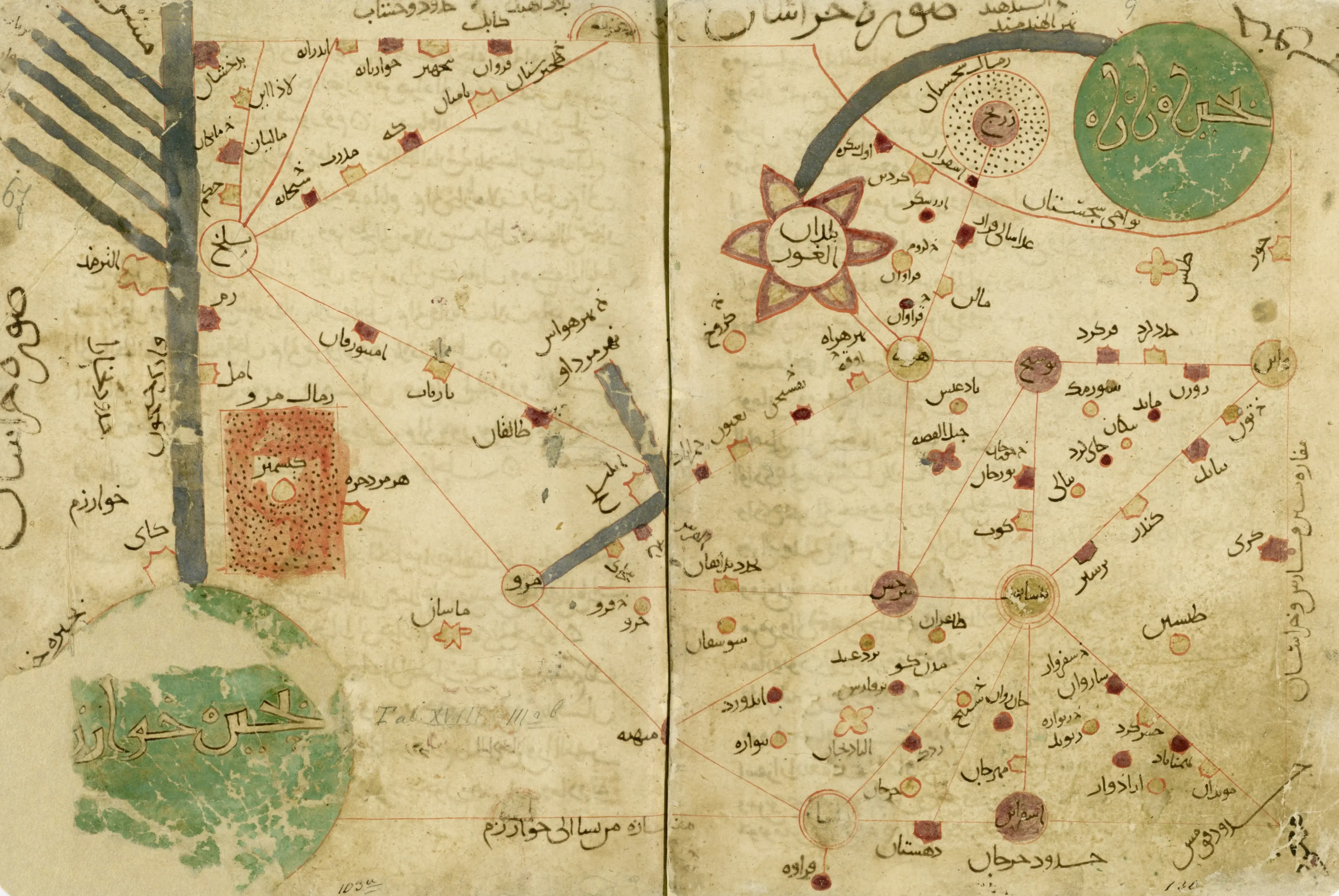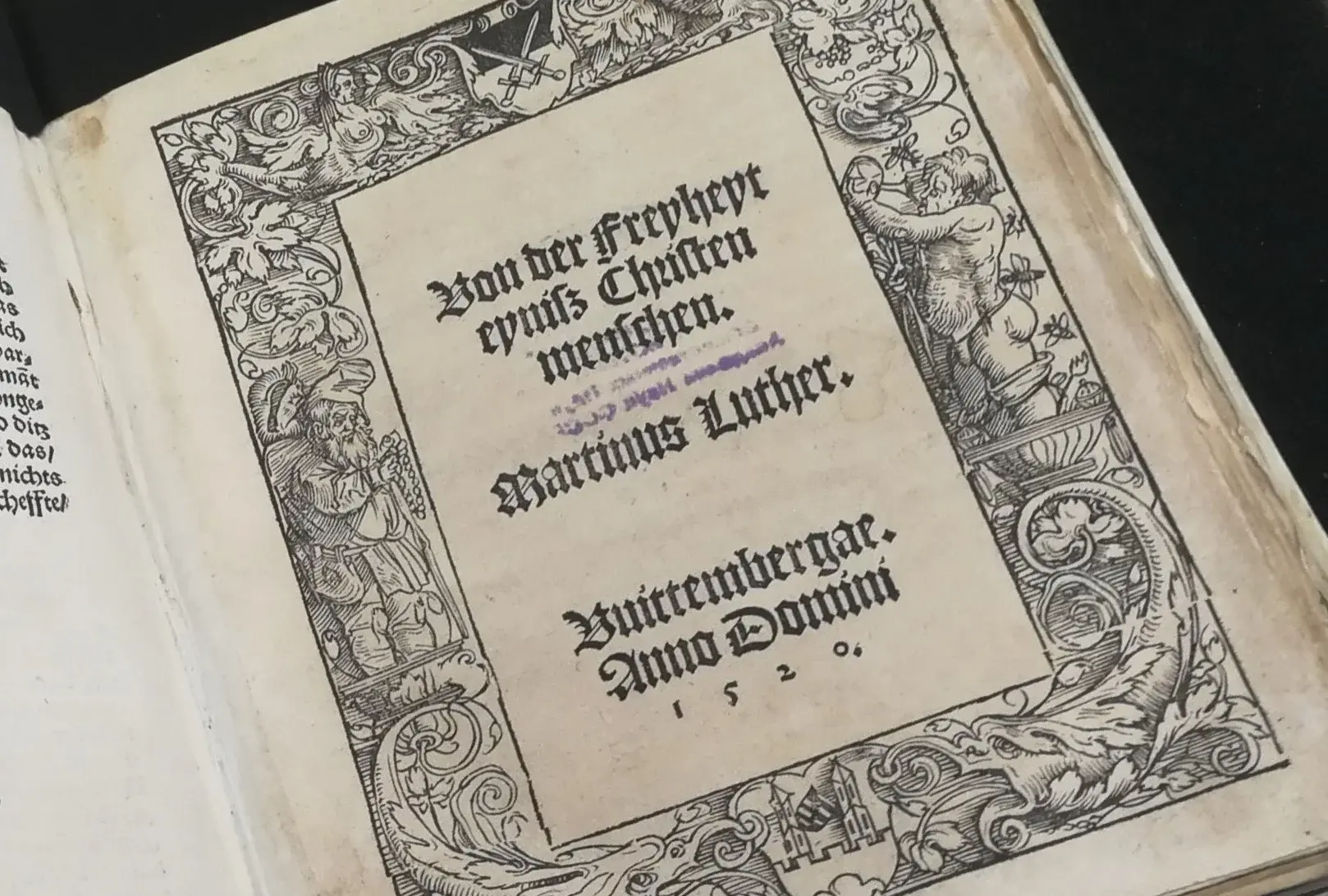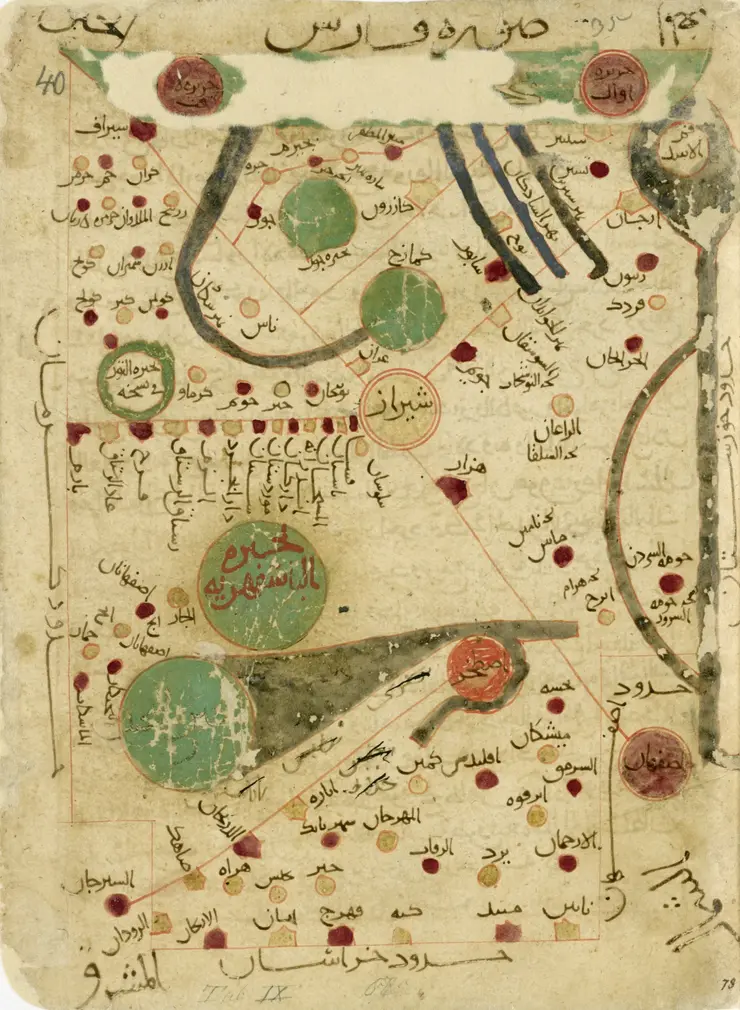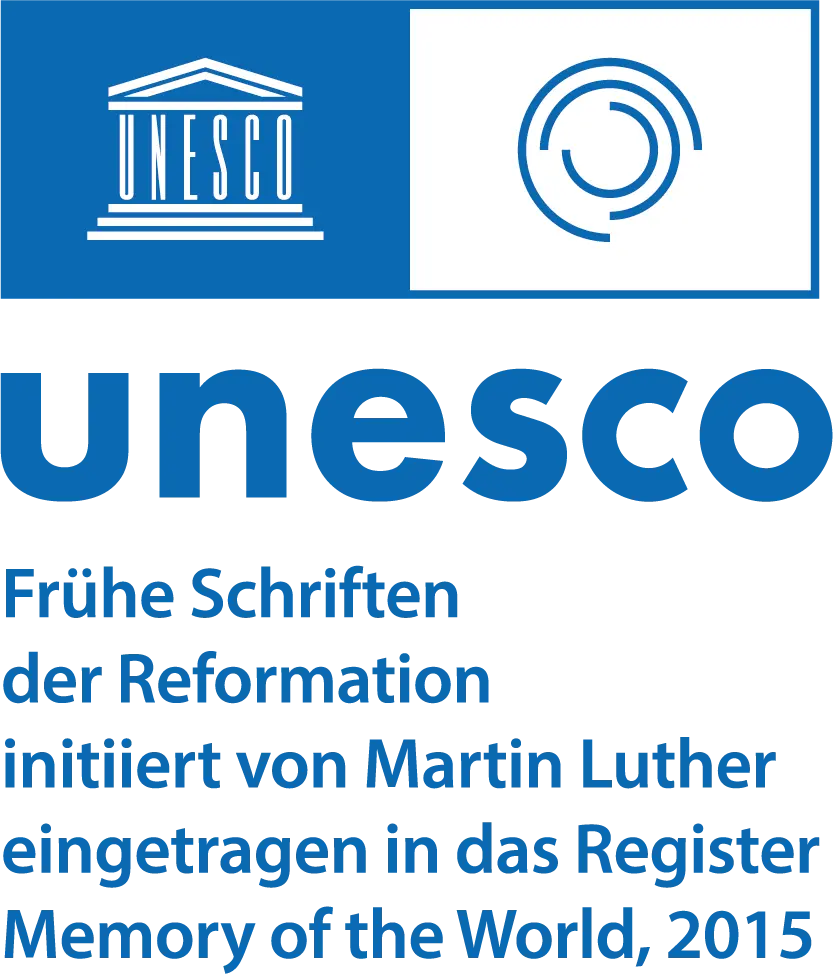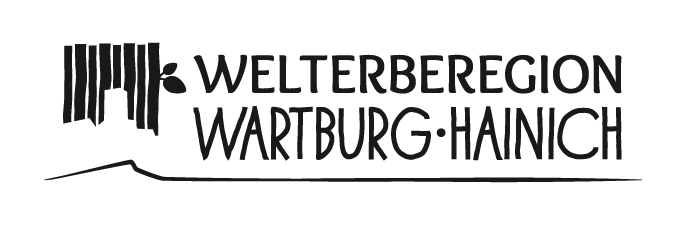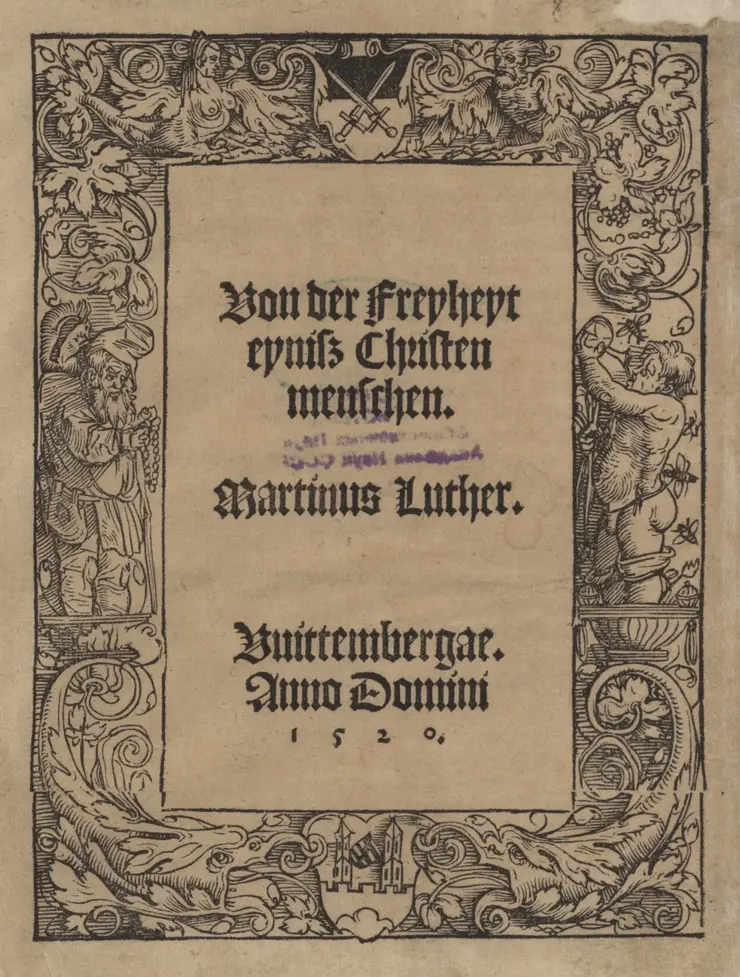The Gotha Research Library has been recognized twice by the UNESCO for preserving World Document Heritage. The "Book of Ways and Empires" goes back to the important geographer al-Iṣṭaḫrī, who lived in the 10th century of our era. The Gotha manuscript, dated 1173, is the oldest copy of the book in Arabic. The first printing of Martin Luther's theological writing "Von der Freiheit eines Christenmenschen" (On the Freedom of a Christian) appeared in Wittenberg in 1520 and is one of the early writings of the Reformation.
UNESCO World Document Heritage twice at the Gotha Research Library
Kitāb al-Aqālīm/ al-Masālik wa-l-Mamālik". Arabic manuscript by Muḥammad al-Fārisī al-Karḫī al-Iṣṭaḫrī.
The Arabic manuscript Kitāb al-Aqālīm/al-Masālik wa-l-Mamālik by the Islamic scholar Abū Isḥāq Ibrāhīm b. Muḥammad al-Fārisī al-Karkhī al-Iṣṭakhrī (d. 951 AD) was declared a World Documentary Heritage Site by the UNESCO in October 2015 in the framework of the Memory of the World (MOW) programme.
With the inclusion of the manuscript in the UNESCO World Register, the Gotha Research Library is being recognised for its efforts to preserve cultural heritage of exceptional value from being forgotten and destroyed. The library supports the UNESCO programme by providing worldwide access to this culturally significant and historically important document.
In the tenth century, Islamic scholars and travellers wrote a series of geographical works that established a new genre within Arabic scholarship known as al-Masālik wa-l-Mamālik. The descriptions were no longer limited to mere presentations of postal routes and the physical characteristics of the respective countries, but also included climatic peculiarities and information about cities, trade, customs and language.
Probably the oldest extant mapped work can be traced to the geographer Abū Isḥāq Ibrāhīm b. Muḥammad al-Fārisī al-Karkhī al-Iṣṭakhrī, who largely quoted, commented on and corrected Abū Zayd Aḥmad b. Sahl al-Balkhī’s (934) lost work Ṣuwar al-Aqālīm. Al-Iṣṭakhrī wrote his geographical description al-Masālik wa-l-Mamālik in the first half of the 10th century. Countless copies and translations into Persian and Ottoman Turkish have been made of the work. It is characterised by 21 maps with sketches of the Islamic Empire of the tenth century. Among them are a map of the world, three illustrations of the Mediterranean, the Indian Ocean and the Caspian Sea, as well as 17 maps of the regions of present-day Morocco, Egypt, Syria, Iraq, some Persian provinces, Armenia, Azerbaijan and Transoxania. Particular attention is paid to the extensive description of the Persian provinces and Transoxania. This is due to the origins of al-Balkhī and al-Iṣṭakhrī, on the one hand, and to the patronage of the Persian-born Samanid rulers, on the other hand.
In 1807, the explorer Ulrich Jasper Seetzen acquired a copy of this important manuscript in Cairo for his patrons, the Dukes of Saxe-Gotha-Altenburg, Ernest II (1745–1804) and August (1772–1822). This manuscript is a copy dated to 569/1173 and bearing the title Kitāb al-Aqālīm, which is a reference to al-Balkhī's work Ṣuwar al-Aqālīm.
The Arabic manuscript is part of the Gotha Research Library's extensive collection of oriental manuscripts, which comprises more than 3,500 volumes, thus constituting the third-largest collection of its kind in Germany. The collection, which was largely created in the early 19th century, includes historical and biographical treatises as well as manuscripts from the fields of theology, jurisprudence, medicine, grammar, lexicography and poetry. It covers a broad spectrum of Islamic scholarship. Since 2015, the collection has been comprehensively indexed in the Gotha Research Library’s database of oriental manuscripts and is being made accessible online.
Digital copy in the Erfurt/Gotha Digital Historical Library
Description of the manuscript in the Database of oriental manuscripts of the Gotha Research Library.
Martin Luther's freedom pamphlet. First edition from 1520
In October 2015, at the request of the Leibniz Institute for European History in Mainz (IEG), the first edition of the Reformer Martin Luther's “Von der Freyheyt eynisz Christen menschen” (On the Freedom of a Christian) was declared along with 13 other objects World Documentary Heritage by UNESCO as part of its Memory of the World (MOW) programme.
With its inclusion in the UNESCO World Register, the Gotha Research Library is being recognised for its activities to preserve cultural heritage of exceptional value from being forgotten and destroyed. The Gotha Research Library supports the UNESCO programme by providing worldwide access to this culturally significant and historically important document.
Luther's freedom pamphlet is an important early work by the Reformer, which he published in the autumn of 1520, at the height of his conflict with the Catholic Church. The pamphlet is addressed to all people in German and discusses the question of freedom in religious terms. Luther’s two-part answer, based on the First Letter to the Corinthians, Chapter 9, is well known: “A Christian man is a free lord over all things and subject to no one. A Christian man is a servant of all things and subject to everyone." Man is free insofar as he is not the servant of the Church. Rather, it is Jesus Christ who acts as mediator between God and man and has set man free for action that is not focused on his own works, but rather is carried out in trust in the justification before God that has taken place through Christ. In this context, faith in the Word of God is of decisive importance, so that the Reformation principle “sola scriptura” (through scripture alone) is supplemented by the Reformation principle “sola fide” (through faith alone).
Like many of his other writings from this period, Luther's freedom pamphlet was a bestseller. After it was immediately translated into Latin, new editions appeared continuously in both languages. Since 1521, translations have been made into Czech, English, Dutch, Spanish, French and Italian. Although the number of copies is not known, thousands of copies are assumed to have been sold in Europe. The printer of the first edition was Johann Rhau-Grunenberg, who provided the woodcut of the title page with a secular decorative frame, which he also used elsewhere. The title page shows a pilgrim and a reveller, their shields held by two dolphins. Above and below are the coats of arms of the Principality of Saxony and Wittenberg.
The first print came into the court library of the ducal house of Saxe-Gotha-Altenburg under the Lutheran theologian and library director Ernst Salomon Cyprian (1673–1745), who had been active here since 1713. Around the Reformation anniversary in 1717, Cyprian acquired numerous prints and manuscripts of Luther and many other reformers on behalf of Duke Friedrich II of Saxe-Gotha-Altenburg. More than 600 of Luther's writings were brought together in anthologies, including this one, which contained 34 writings mainly from 1520 and, as number 8, the freedom pamphlet. The volume is bound in white pigskin and bears the inscription "Lutheri opera anno 1520 edita. Tom. X" on the spine.
Luther's prints and manuscripts – including 48 autographs as well as the world's largest collection of his “Table Talk” and about a quarter of his surviving correspondence – form the core of the Gotha Research Library's collection on the history of the Reformation and Protestantism. This collection is considered a reference collection for the history and reception of central and north German Protestantism.
Digital copy in the Erfurt/Gotha Digital Historical Library
Key documents of Luther's early effectiveness. Virtual exhibition by the Leibniz Institute for European History in Mainz.
